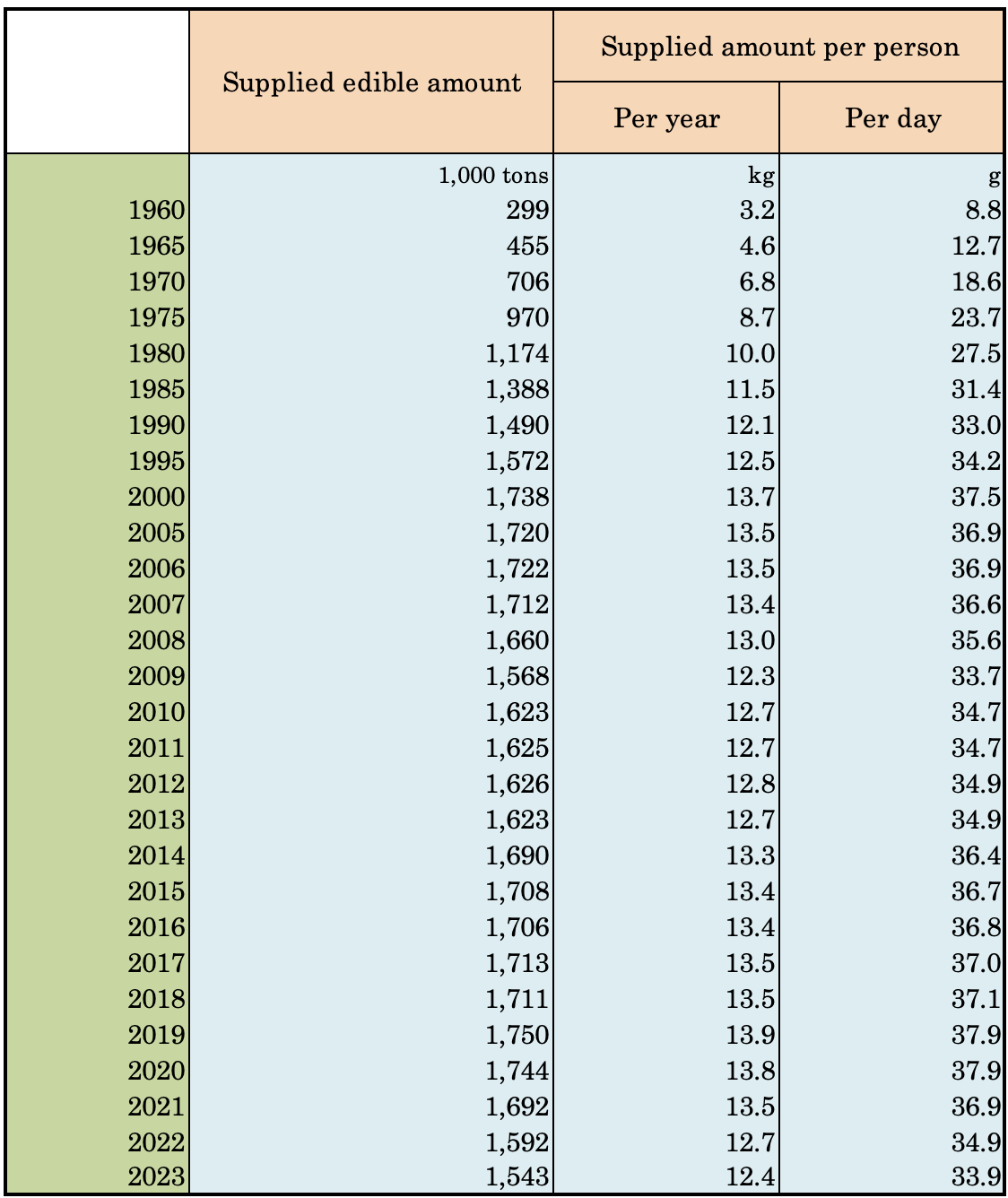Vegetable oil is widely used for both edible and non-edible purposes. However, it is difficult to accurately assess exactly how much vegetable oil is used for what purpose.
JOPA estimates the amount of products supplied by volume of container from companies that produce vegetable oil. This makes it possible to observe general trends in consumption by use.
(1) Containers with a capacity of less than 8 kg
Although small containers of 1.5 kg or less are the most common, the recent increase in single-person households and changes to family structure have caused containers to become even smaller. There has been an increase in container of 500 g or less. These containers are sold by retailers and are mainly intended for household consumption.
(2) Containers with a capacity of 8 kg to 16.5 kg
16.5 kg cans (call 18-liter cans) are the most common and are a traditional container in Japan. These cans are mainly intended for the restaurant industry and delicatessen industry, and are therefore referred to as "business use."
(3) Containers with a capacity exceeding 16.5 kg
Although some types of oil are supplied in large containers such as drums, the majority of these containers are shipped in bulk by using tanker trucks and are normally referred to as "bulk." These containers are mainly intended for use as a raw material in a variety of processed food industries including margarine, mayonnaise, dressing, and snack foods. The 1990s saw an increase in a form in which small mini-tanks were supplied via tanker truck in the large-scale industries of restaurants and delicatessens. These containers are generally referred to as "for processing." This category accounts for 60% of demand for edible oil.
Table 10: Supply amount of edible vegetable oil by container capacity (estimated)
(Unit: 1,000 tons)

Notes: (1) The table shows estimates compiled by the JOPA.
(2) The amounts are rounded to the nearest 1,000 tons, so the sum of breakdowns and total values do not match in some cases.
(3) The table shows containers categorized by capacity at the time of product shipping. Although products shipped by mini-tanker are mainly for business use, such products are included in the "for processing" category in this table. As a result, please note that the values in this table do not match the actual form of consumption.
It is not possible to accurately ascertain the amount of vegetable oil consumed in foods in Japan. However, the MAFF estimates the quantity of vegetable oil supplied for edible use by subtracting the amount used for industrial purposes from the total amount of vegetable oil supplied for a one-year period (accounting year). The resulting amount is the amount of edible oil consumed. This value is divided by the estimated population (median value for that year) in order to calculate the amount supplied per year per person (refer to Table 11).
In addition to vegetable oil consumed in households, this supplied amount (= consumed amount) also includes vegetable oil used in preparing processed foods, commercially-available delicatessen foods, etc., and vegetable oil used in the restaurant industry. Recently, the amount of consumption per person has remained steady.
Table 11: Change in the amount of edible oil supplied (amount consumed) for vegetable oil in Japan

Source: Food Balance Sheet (MAFF)
Note: The "supplied edible amount" listed in the table is calculated by subtracting the estimated amount lost in the processing and food preparation processes from the amount supplied for edible use.



